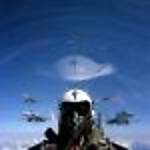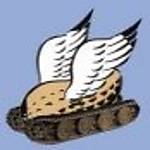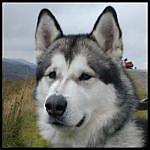Brief (Progress - wise) Update as promised; this one on the hand carved prop.
To begin the wood used on this one was the Midwest 1/8 inch 5 laminates birch ply sold to the flying model community in most LHS's. I tried the 5 ply versus the 3 ply first and it went so well I had no need to do a 3 ply at this point. As stated earlier the ply had to be doubled to get another 1/16 inches of thickness and then reduced to the proper thickness. The 5 ply is on the right.

Next step is to draw the rough outline on the front or face of the "plug" as I call them or blank.

The first thing I do at this stage is to drill out the centre hole and then the fun begins. I am fortunate in that I do a lot of woodworking thus have a couple of pretty handy tools available. As mentioned previously the carving is kept at a minimum; I use sanding and filing - a longer process but easier on the hands and much easier to control and not remove too much stock. First the thickness is achieved using the "El-Cheapo" Bench Belt Sander. Then the front profile is achieved using a small drum on an oscillating drum sander. (I believe a dremel with their small rasps and their mineature sanding drums would work as well or better and will try it in future.) Next the side profile is added. I didn't anticipate a lot of interest in the technique thus didn't do photos step by step. The side profile is to taper the blade thickness from hub to tip; the taper is more pronnounced on the top or front then the back face of the prop. This photo shows the basics if you look real hard. The kit prop was included for reference.

At this point I switch to the "Handraulic" technique and refine the profiles and then smooth out the finish. Once happy with the completed raw product a woodstain (golden oak in this case) and one coat of furniture durathane is applied. After an overnite drying I do a quick wet sand with very fine grit and add a coat of Model Master Acrylic semi gloss clear.
So here's the results. I'm very pleased with this phase of the build and once the Axial Prop Logos are added it should look pretty "real".



All in all it took me under 2 hours start to finish. The critical point by the way is close to the hub; I work with sandpaper wrapped around a dowel or screwdriver shaft at that point. In this case it's relatively easy as the spinner covers over the hub and the extreme tapers.
If there's enough interest out there I'll do a complete thread next carving. For now I really want to complete this beast and I'm behind on a book review I promised to Stephen.
Last, I hesitate to add that I'm planning a second build for the KoTS Campaign........got to do better then this beast and badly need to do a WNW Kit before I get turned off or jump off a cliff!! As someone else says often and well, "must build OOB, must build OOB"etc.
Cheers,
Lance


































